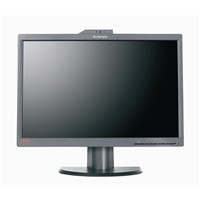The Green Grade: 5 eco-friendly monitor vendors

Time for my second promised list on the greenest technologies money can buy, and I'm casting my latest scrutiny on a category I haven't written about in a while: monitors and displays.
To pull together this focus on the 5 greenest monitor companies, I stopped first at the Electronic Product Environmental Assessment Tool (aka EPEAT), where I took a look through its latest Gold ranking for Displays. A moment on how the rating system works. Manufacturers need to reach a certain base level of points to be included in EPEAT. Their ability to reach Gold status is predicated on the optional points they earn in the following criteria:
- Reduction or elimination of environmentally sensitive materials
- Materials selection
- Design for end of life
- Product longevity and lifecycle
- Energy conservation
- End of life management (for the vendor)
- Corporate performance (for the vendor)
- Packaging
You can earn a total of 25 optional points.
Based on the EPEAT scores, plus some additional information that I dug out from the Greenpeace Guide to Greener Electronics, here are the five most environmental conscious monitor and display companies.
The first thing that I noticed is that the highest score in the category, for the Lenovo ThinkVision L2251x Wide, was earned back in October 2009. At just shy of $300 list price, the big pitch on this 22-inch product is that it is the first to carry the TCO Certified Edge rating. (TCO accounts for both eco AND ergo design features.) Approximately 30 percent of all the plastics in the monitor are made from post-consumer recycled materials and Lenovo claims that the display is 33 percent more energy-efficient than most competitive offerings and 29.7 percent more efficient than the Energy Star 5.0 specification.
Lenovo has plenty of other monitors listed. The downside is that the company has been slower than it said it would be to remove PVC vinyl plastic and brominated flame retardants (BFRs) from its products. (It was shooting for the end of 2009, now the time line is 2011.)
NEC Display, which has created a carbon footprint meter for its monitors and offers two different eco-modes, shows up high on the list with the NEC MultiSync EA261WM-BK. This 26-inch model has only 1 less point that the Lenovo product mentioned above. Like Lenovo, NEC Display has plenty of products listed here. The downside is that I can't give you any information from the Greenpeace guide, because the company isn't covered. However, the company HAS published an extensive Green Vision from a corporate standpoint.
The tech giant claims that the G2210 and G2410 LED wide screen monitors operate on about 50 percent less power than competitive flat panel monitors, using just 0.15 watts of electricity in sleep mode. One of the coolest features in this series is the fact that they will respond and adjust automatically to ambient light. Dell usually does pretty well on the Greenpeace list, but the company currently is the target of some adverse publicity from the organization.
The HP Compaq LA1751g LCD Monitoris both Energy Star 5.0 and TCO 5.0 certified, and it uses about half the mercury that was used by previous models and about 40 percent less power. One big deal is that the company says the panel, cabinet and the structural sheet metal that went into making it are BFR/PVC-free. HP moved up on the latest Greenpeace list because of its ability to achieve this (it is slightly higher than Dell), and the company is pushing from more action on this issue.
The final vendor I'll mention is BenQ USA, which you might not know as well. The company's 24-inch ET-0036-N/V2400 Eco supposedly saves about 36 percent compared with competitive offerings, and it does away with the mercury. BenQ isn't followed by Greenpeace, but it pitches itself as the word's leading LEC monitor brand. Here is some more information about some of its latest LED product launches.
The thing that is sort of interesting is who ISN'T on this list, or at least not much. ViewSonic, for example, has only one Gold monitor as of this writing, although it has a bunch on the Silver list. Also don't see Philips on the Gold list at all, although it has plenty of Silver-ranked options.
If you, like many other companies, are adding green criteria to your procurement policies, share this article. Also be sure to revisit my piece a couple weeks ago about 6 greenest notebook companies, especially if you're in the market for an upgrade for your team or your college-bound kid.
